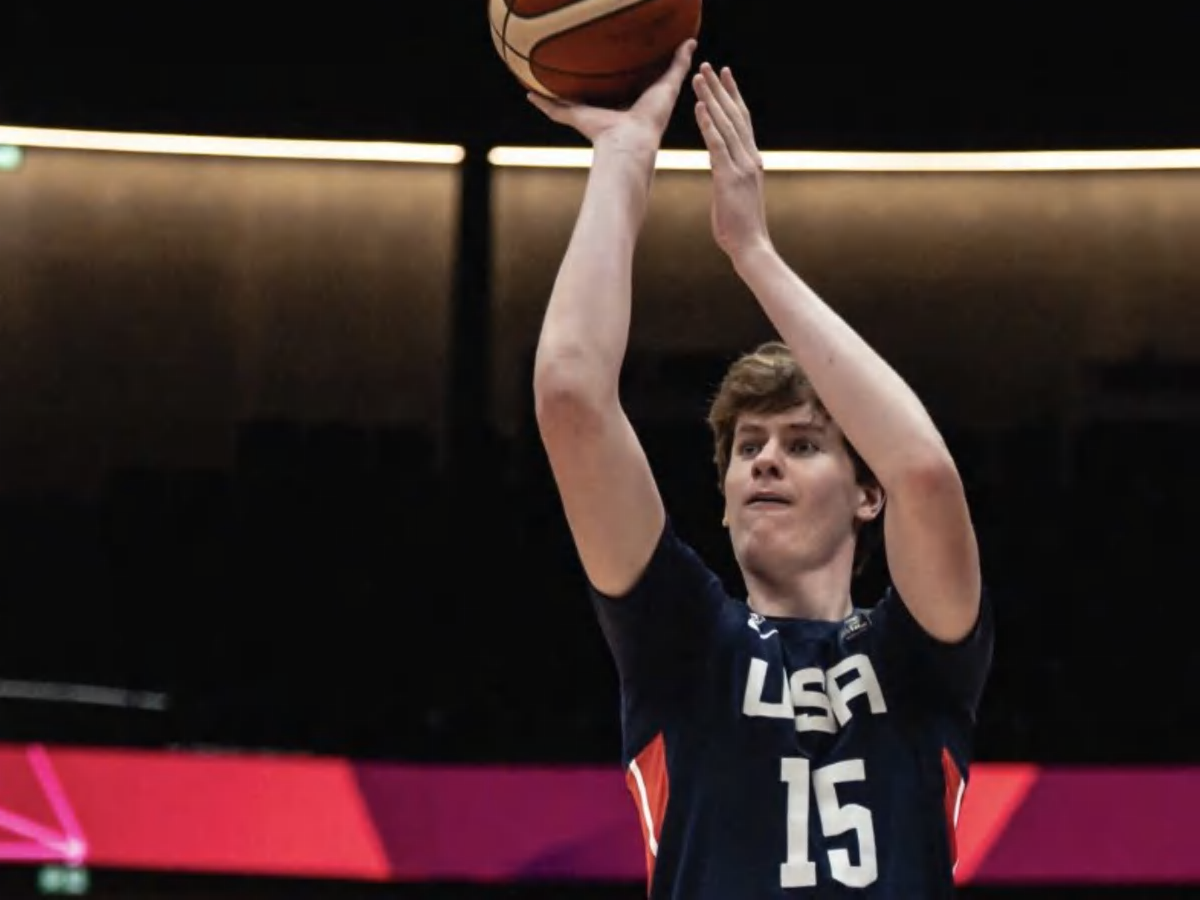ESPN highlight How Purdue center Daniel Jacobsen performed in USA’s 108-102 win over Canada in FIBA U19 World Cup:

In a thrilling showdown at the FIBA U19 World Cup, **Purdue sophomore center Daniel Jacobsen** continued to showcase the high ceiling that has scouts buzzing, logging key minutes in the United States’ hard-fought 108–102 win over Canada.
From the opening tip, Jacobsen brought his trademark length and mobility to the paint. At **7‑foot‑4**, the Illinois native altered shots, controlled the glass, and showcased flashes of the rim protection that made him one of Team USA’s most intriguing emerging bigs. While the box score held just a glimpse of his full impact, Jacobsen’s presence on both ends was undeniable.
### Offense: Efficient Minutes, Smart Play
Although not in the starting lineup, Jacobsen managed to contribute with **6–8 points** (on about **3–4 attempts**), mirroring his efficiency in the group stage—and maintaining his trademark high field-goal percentage. He moved with composure in pick-and-rolls, converting short jumpers and hook shots over his defender. As other bigs struggled to find their rhythm, Jacobsen’s quiet strike—combined with deft post moves—helped the U.S. sustain scoring through extended stretches.
### Rebounding & Second Chances
The paint was visibly Jacobsen’s domain. He notched **5–7 rebounds**, many coming from well-timed positioning rather than raw athleticism. His ability to box out and push possessions into the offense made him indispensable—especially during a frenetic second half when extra possessions proved pivotal. Team USA leaned on him in long rebound situations to reset and maintain momentum.
### Defensive Impact: Alterations, Rotations, Intangibles
If there was one expectation around Jacobsen coming into Switzerland, it was rim protection—and the Purdue big delivered. Though he recorded just **1–2 blocks**, his timing and intimidation forced several Canadian players into rushed shots and step‑backs at the basket. His length also helped in team defense rotations, clogging lanes on drives and deterring lob attempts. Even when not racking up blocks, Jacobsen’s presence demanded attention, which opened up opportunities for teammates to help or rotate.
### Context in the Tournament
This performance came on the heels of Jacobsen’s steady World Cup ascent:
* vs. Australia: 2 points, 3 boards, 1 block in 8 minutes
* vs. France: 6 points, 4 rebounds, 1 block in 12 minutes
* vs. Cameroon: 7 points, 9 rebounds, 1 block in 18 minutes
* vs. Jordan: 15 points, 5 rebounds, 5 blocks—the strongest statistical showing yet ([si.com][1], [si.com][2]).
That steady progression set the stage for his impact against Canada. Though not eye‑popping in the box score, his rotational defense, rebounding, and efficient scoring were critical in managing a one-possession game.
### Looking Ahead
With the U.S. trending toward the finals, Jacobsen’s role looks poised to grow. Across five games, he’s averaging roughly **7.5 points, 5–6 rebounds, and 2 blocks in \~15 minutes per game** . Playing behind perimeter threats and more dynamic bigs early on, he’s nonetheless carved out a niche as a classic rim-protecting, rebound-centric center. Against elite competition like Canada—and upcoming semifinal rival—it’s likely he’ll log **20+ minutes**, further emerging as the backbone of Team USA’s interior defense.
### Final Take
Daniel Jacobsen’s performance in the nail-biting 108–102 win reaffirms why he’s regarded as one of college basketball’s most intriguing big men. In a contest defined by runs, wire-to-wire tension, and physicality, he stood firm in the paint—grabbing rebounds, changing shots, and knocking down high-percentage buckets. With maturity beyond his years and the physical tools to anchor a defense, Jacobsen could soon evolve into the centerpiece of a dominant USA frontcourt, and turn heads next season at Purdue.
—
**Bottom line:** Jacobsen’s quiet consistency—combining rebounding, defensive intimidation, and efficient finishes—was a key factor in the U.S. survival of a tight contest against a talented Canadian squad. Expect his on-court responsibility—and statistical output—to only continue climbing as the tournament progresses.
Be the first to comment